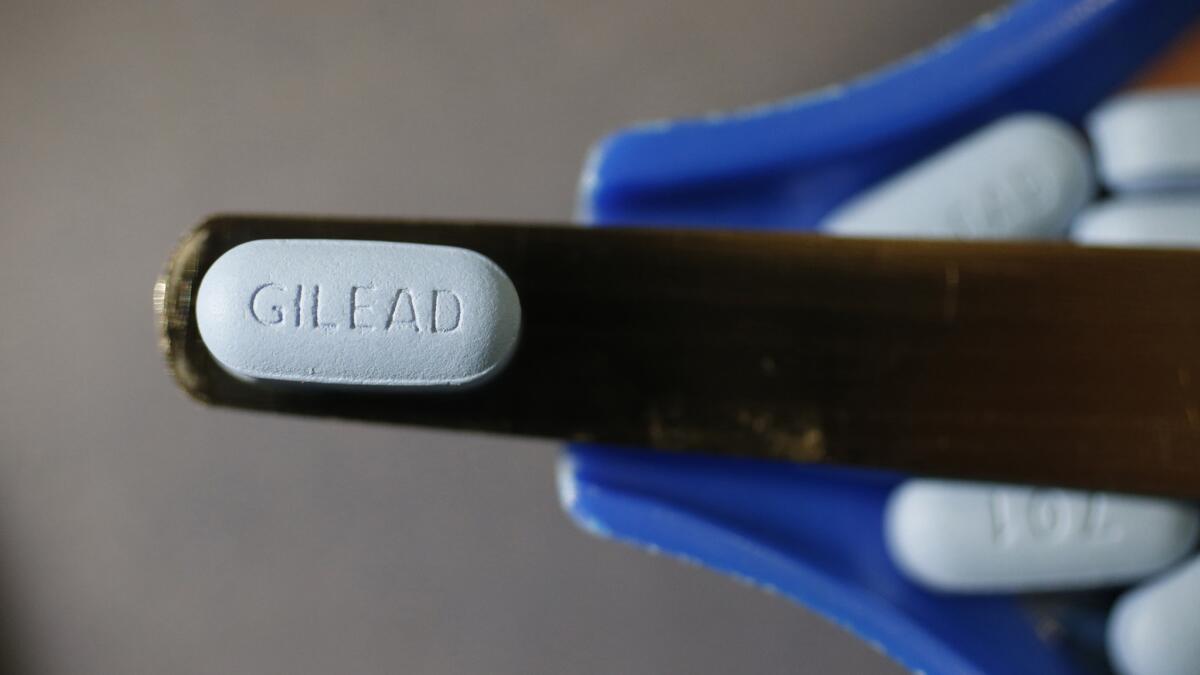A history of Gilead’s biggest HIV drug

Here’s a history of the drug tenofovir, which became one of the world’s most-prescribed drugs for HIV, bringing in $11 billion in annual sales for biotech firm Gilead Sciences.
1986 A Czech Republic scientist files for a U.S. patent on tenofovir.
1997 Scientists from Gilead and UC San Francisco show that tenofovir treats HIV. The drug must be given intravenously.
July 1997 Gilead slightly modifies the drug to create tenofovir disoproxil, or TDF, which can be given as a pill. Regulators approve the medicine in Oct. 2001. Its last patent expires in 2018.
April 2001 Working to reduce the drug’s side effects, Gilead scientists publish research on a different chemical version of the medicine called tenofovir alafenamide, or TAF.
April 2002 Gilead pays doctors to test TAF in HIV patients, including in Los Angeles. The positive results aren’t published until 2014.
Oct. 2004 Gilead announces it has stopped research on TAF. The company, however, continues to apply for patents to protect TAF.
May 2005 Gilead’s partner, a Japanese company, files for a patent on a combination pill that includes TAF and other HIV medicines.
Dec. 2010 A Gilead executive tells investors about “an interesting new molecule” the company has added to its research plans. The molecule is TAF.
Nov. 2015 The FDA approves TAF in combination with three other HIV medicines. The last patent on the new pill Genvoya expires in 2032.
March, April 2016 The FDA approves two additional TAF-based combination pills: Odefsey and Descovy. Gilead sales reps urge doctors to switch patients to the new drugs, saying they are less toxic to the kidneys and bones.
ALSO
More to Read
Inside the business of entertainment
The Wide Shot brings you news, analysis and insights on everything from streaming wars to production — and what it all means for the future.
You may occasionally receive promotional content from the Los Angeles Times.











